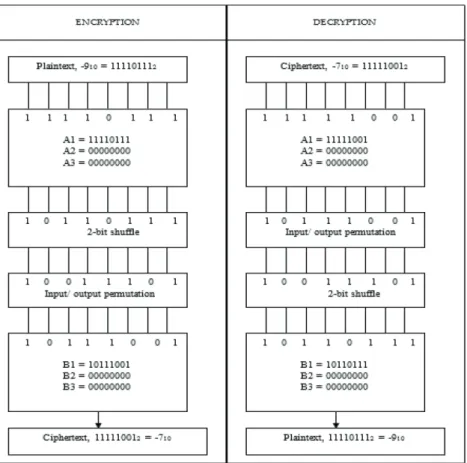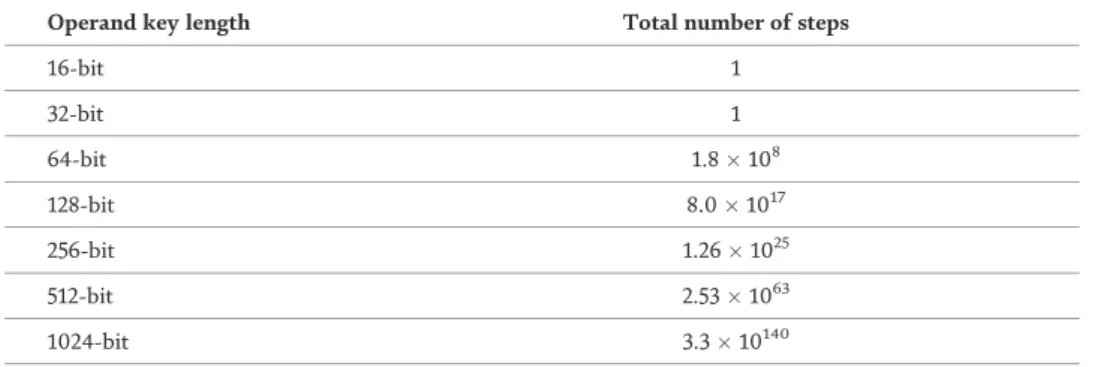Questions regarding the use of the book should be directed to the Rights and Permissions Department of INTECHOPEN LIMITED ([email protected]). On the contrary, poor implementation of protocols and algorithms has been the main cause of the problem. In Chapter 8, “High-Speed Area-Efficient Implementation of AES Algorithm on Reconfigurable Platform,” Mane and Mulani present an advanced encryption standard (AES) implementation scheme of a symmetric key encryption algorithm.
Introduction
Complex detection systems are application specific and these systems cannot be represented by any generic architecture.
Conclusion
Most existing proposals for intrusion detection have not paid adequate attention to these critical issues. In: Proceedings of 6th International Workshop on Recent Advances in Intrusion Detection; Pittsburgh, PA; September 8-10, 2003. In: Proceedings of the First USENIX Workshop on Intrusion Detection and Network Monitoring; Santa Clara, CL;.
Proceedings of the 7th ACM SIGKDD International Conference on Knowledge Discovery and Data Mining; Edmonton, Canada; 2001. In: Proceedings of the International Conference on Computer and Communication Engineering (ICCCE'06); KL, Malaysia; May 10-12, 2006. In Section 2, we present the background knowledge required for designing and implementing the new cross-layer security scheme.
Next, a review of the remainder number system (RNS) is presented with a brief description of the Chinese remainder phrase (CRT). In Section 5, cryptanalysis of the cross-layer security scheme will be performed to quantify the security.
Background
Multi-level convolutional cryptosystem
Research has been conducted using various information theoretical models to develop physical layer security based on the characteristics of the wireless links [3, 4]. Therefore, any deployment of the physical layer security protocol in addition to a well established upper layer security scheme will be a pragmatic approach to robust data transfer and confidentiality [6]. This includes a review of the various techniques used in developing the new security scheme.
This section presents the background knowledge needed for designing and implementing the new cross-layer security scheme. This involves a review of the various techniques used in the development of the new security scheme. Summary for the calculation of the k-coefficients for the 1st and 2nd levels of decomposition.
States of each transducer or convolutional code block in the cascade given by the contents of the submatrices in the generator matrix;. After specifying the keys, the vulnerable convolutional code block will be cascaded in different stages using the product digits obtained from the S-box and P-box.
Residue number system (RNS)
At the destination, the transition functions are similar to those for the encoder at the source, but they switch roles. The transition functions are very critical in the implementation of a convolutional cryptosystem, as it is responsible for its dynamic nature, hence a higher level of security. For higher n-bit shuffling boxes, the number of keys increases, for example, 8-bit shuffling boxes give 28 keys.
It is worth noting that the level of security can be increased significantly by increasing the number of stages to be cascaded. The remainder number system uses the Chinese remainder theorem (CRT) to calculate unknown values from the remaining remainders or remainders when unknown values are divided by known numbers. A New Cross-Layer FPGA-Based Security Scheme for Wireless Networks DOI: http://dx.doi.org/10.5772/intechopen.82390. has exactly one solution modulo the product m1, m2,..., mN.
In this research, the integers Tj¼∣mx^jj∣, often called the multiplicative inverses of m^jara, are calculated a priori by solving the linear congruence in (Eq. In other words, if Mj= M/mj, then the multiplicative inverses of Tjara are calculated by solving the congruence TjMj= 1 (mod mj).
RSA public-key cryptography
Protocol of implementation of cross-layer security scheme
Illustrative example
In other words, if Mj= M/mj, then the multiplicative inverses, which Tjare computed by solving the congruence are TjMj= 1 (mod mj). has exactly one solution modulo the product m1, m2,…, mN. Security services achieved with RSA cryptography are authentication and non-repudiation based on digital signatures and confidentiality based on encryption. Protocol of implementation of cross-layer security scheme The new scheme is implemented at the application and physical layers.
Protocol of implementation of cross-layer security scheme The new scheme is implemented at the application and physical layers. The
The entire process is inverted starting with convolutional decoding in the physical layer, which was illustrated in Table 4. For subband decoding, the entire process is inverted with level 3 of coding becoming level 1 for decoding. The third-level approximation data points, a3 must be equal to the set of residues, r1 obtained from the RNS-based RSA ciphertext using the modulus, m1= 107.
The same process is repeated to obtain all the other data points of the RSA ciphertext set. The RSA ciphertext set is passed to the RSA decryption block at the application layer. The same process is repeated to obtain all the other data points of the plain text set.
A New FPGA Interlayer Security Scheme for Wireless Networks DOI: http://dx.doi.org/10.5772/intechopen.82390. A New FPGA Interlayer Security Scheme for Wireless Networks DOI: http://dx.doi.org/10.5772/intechopen.82390.

FPGA implementation of security scheme applied to CDMA
FPGA implementation of new scheme applied to CDMA
New VHDL code package
Behavioral simulation and synthesis report
In this section, the FPGA implementation of a new scheme applied to CDMA, the new VHDL code package to implement A mod n operations, synthesis report and behavior simulation results are presented. This distinct signature is ensured by using spread spectrum techniques where each user's message is transmitted using orthogonal waveforms. In orthogonal signaling, the residuals are assigned to orthogonal waveforms that make up the CDMA signal [20].
Considering an (8, 8, 2) multilevel cryptosystem for illustrative purposes, the mapping process will involve M = 28= 256 orthogonal waveforms. Using the dynamic range of an array of M = 28= 256 orthogonal waveforms is required to fully represent all integers or symbols. The VHDL code used to declare the two types of one-dimensional arrays is shown in Figure 6[22].
Other operations in the Walsh hardware function generator implementation are trivial since they involve modulo-2 addition with operators built into the VHDL code to handle such operations. A package is developed in VHDL code to derive residuals similarly to the X mod N operation for any randomly generated data.
Cryptanalysis of cross-layer scheme
Cryptanalysis at the application layer
Cryptanalysis at the physical layer
Cryptanalysis of the new cross-layer security scheme
The cryptanalysis will be performed separately at the application and physical layers and later combined in the cross-layer scheme to demonstrate the high security level of the new scheme compared to separate implementations. This is partial key exposure attack since the number of steps, S1 required for the attack depends on one of the prime numbers. Security at the physical layer is ensured by the multi-level convolutional cryptosystem that encrypts already encrypted data originating from the RNS-based RSA.
Therefore, if q is the number of states, then to completely break the (k, k, L) N-cascaded cryptosystem, the minimum number of plaintext-ciphertext pairs (u, v) required is [12]. Therefore, the main purpose of the new cross-layer security scheme is to increase the security level of the physical layer despite the small valuable data points transmitted derived from the RNS-based RSA to increase the throughput. The analysis will be based on partial key exposure and attacks that contain only ciphertext at the physical layer for eavesdroppers who could intercept the transmitted data.
The number of steps, S, required to break the new cross-layer security scheme should be a product of S1 and S2 given as [12]. Comparing Tables 5-7, it can be seen that high security levels comparable to the traditional 1024-bit RSA implemented at the upper layer could be achieved using short operand key lengths of 128 bits and 256 bits for cross-layer security.

Data throughput quantification
Coded orthogonal signaling
It is worth noting that the security level could be much higher compared to the values displayed in Table 7 if the S-boxes were implemented with 4-bit and 8-bit shuffling instead of the aforementioned 2-bit shuffling.
Forward error correction (FEC) code
It should be noted that the security level could be much higher compared to the values shown in Table 7 if the S-fields were implemented using 4-bit and 8-bit scrambling instead of the aforementioned 2-bit scrambling. implemented at the physical level. This section will show how convolutional coding could be used to achieve both conditions using orthogonal signaling or forward error correction. Therefore, high data throughput can be achieved by using a small number of bits in the block length, N.
The Viterbi algorithm [25] is the most comprehensive decoding algorithm for convolutional codes and has been widely used for forward error correction in wireless communication systems. In this subsection, the Viterbi algorithm will be applied to the nonlinear convolutional code. Using transition tables in the appendix, the final transmitted sequence, which is the output bits from stage 2, is given as Tout.
For a good trellis, the final state is the all-zero state as seen in the winning path in Table 9. The final received sequence is identical to the original transmitted message of M'= Rfinal= 10110000 despite the first bit error.
Security attacks in wireless networks
Conclusions
Appendix: transition tables
Other attacks such as denial of service and replay attacks can be bypassed if the cross-layer security scheme is associated with Transmission Control Protocol (TCP). In this chapter, we have described a new cross-layer security scheme that has the advantage of improving both security and throughput, as opposed to existing schemes that improve either security or throughput, but not both. The new scheme is implemented using the Residual Number System (RNS), non-linear convolutional coding and subband coding in the physical layer and RSA encryption in the upper layers.
By using RSA cryptography, the scheme could be used in encryption, authentication and non-repudiation with efficient key management in contrast to existing schemes, which had poor key management for large wireless networks since their implementation was based on symmetric encryption techniques. In addition, Viterbi algorithm was performed for the new nonlinear convolution code to highlight the error correction capability. Hence, nonlinear convolutional code is very critical in the implementation of the new scheme, as it contributes to the improvement of both security and throughput.
The entire scheme can be implemented at different access points in a wireless network as it fits on a single FPGA. Finally, the new layer-by-layer security scheme is essential to avoid some attacks in wireless and computer networks.

